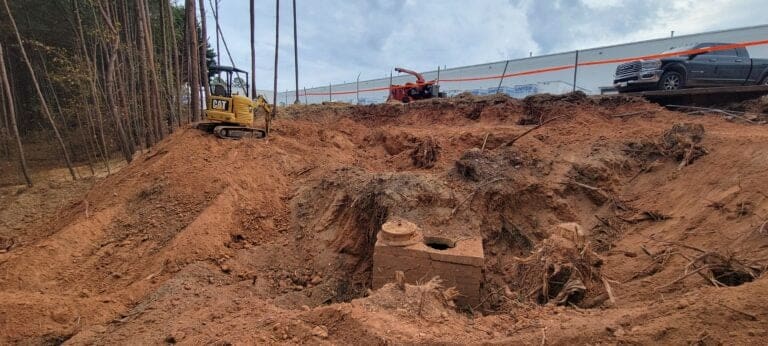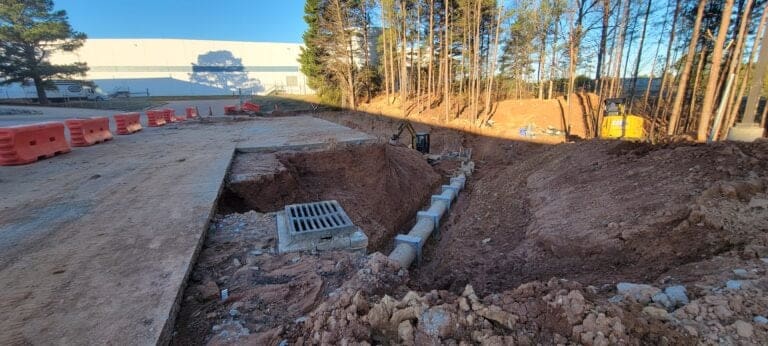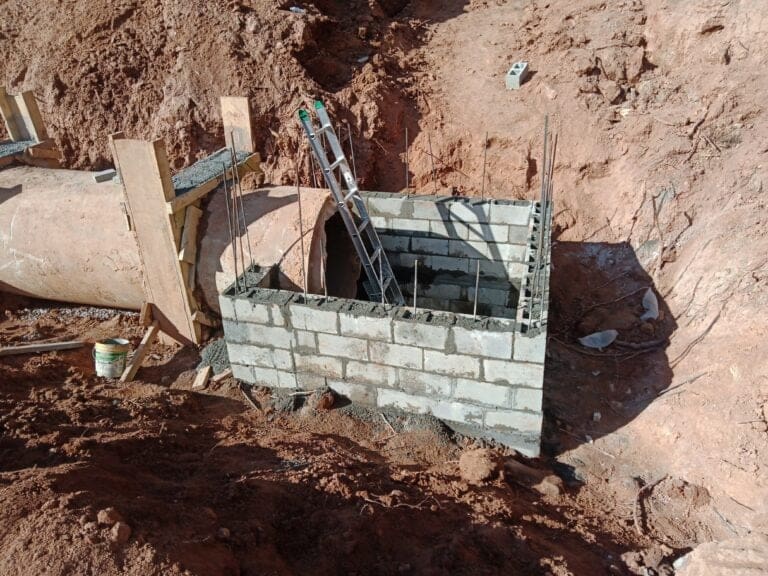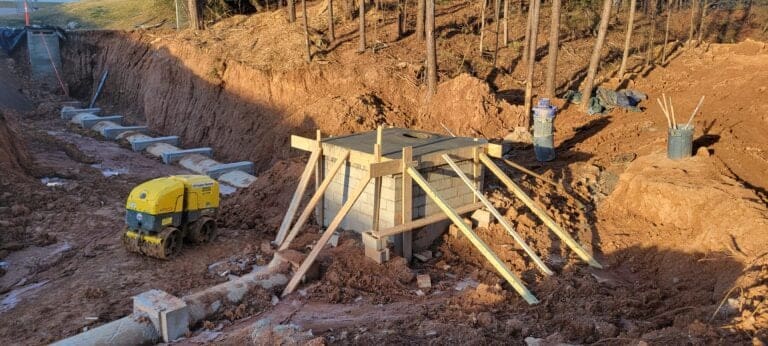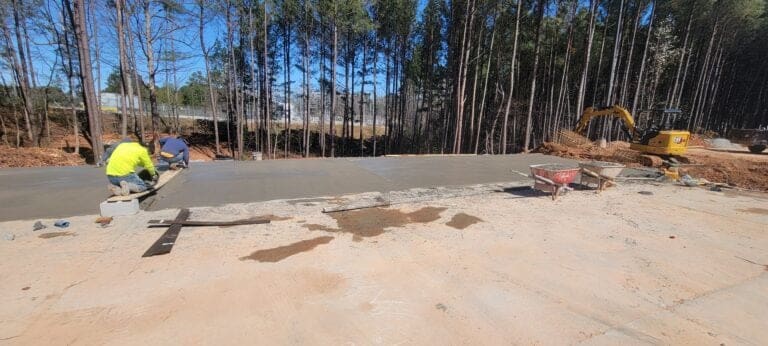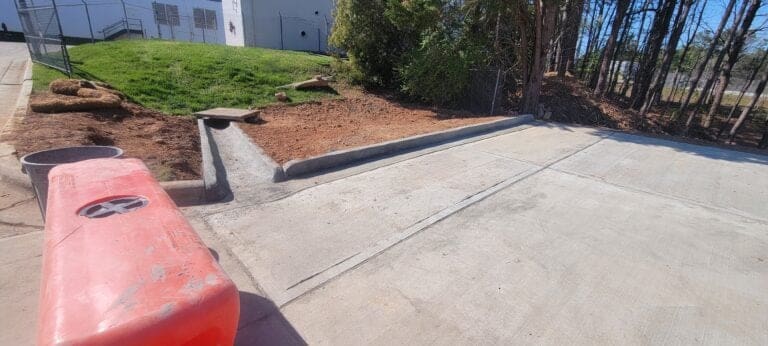To understand the extent of the necessary repairs, AQUALIS had to thoughtfully clear the area. First staging necessary construction BMPs (Stormwater Best Management Practices) and temporary stormwater bypasses to protect the property and downstream ecosystems from excessive construction sediment or debris. Then the fence at the edge of the parking lot was removed to allow access for heavy machinery. Mature trees within 10-15 feet of the stormwater system were chopped and chipped. This allowed AQUALIS visualization of the damage. Multiple four-foot root balls were found along the pipes and junction box. As the trees grew, the root systems expanded into the infrastructure and disjointed connections creating large voids in the system leading to sinkholes at the surface.
The soils in this area were not the necessary engineered fill that is chosen to protect underground infrastructure and meet acceptable compaction rates, instead the surrounding soils were soft and unsuitable for protecting the pipelines. The soft soils allowed additional shifting of the components, misaligning connections and destabilizing the junction box.
AQUALIS began excavating the area to remove the root balls and unsuitable soils to allow access for repairs. To ensure the surrounding parking lot did not suffer damages during construction, the concrete parking pads within the limited area of disturbance were removed. This ensures the entire compromised parts of the system could be removed safely and the area could be properly regraded and compacted.
Junction boxes are stormwater assets that act as a connection point for pipeline. The junction box had suffered such severe fracturing from the root balls and sediment shifting, that removal and replacement was the most logical choice for the integrity of the stormwater system. Three additional junction boxes were inspected and required minor repairs.
Each stormwater system is unique and tailored to the quantity of rain expected in the area, amount of impervious surfaces, available space for assets and weather patterns of the area among other factors. When originally designed, common practice for junction boxes was to construct the asset from brick or cinderblocks. During conversations with all relevant parties, it was determined staying with the original design of the property was recommended as enhancements to the original design, including rebar and additional grouting, would prevent a reoccurrence of this issue.
The failed junction box was removed, and the surrounding pipeline was excavated. First the pipeline health was addressed. Some sections of pipe were replaced but most were in fair shape and could be repaired back to original function. By repairing pipe instead of replacing it, this project was able to be cost effective for the client while still remediating the system.
Using cinderblocks, rebar and concrete, the junction box was reconstructed to the original design with added stability. The pipe was extended to meet the edge of the junction box to form the top of the box around the pipe. By doing these processes simultaneously, AQUALIS ensured stability and integrity through each step of the project. Construction of the box continued around the pipeline and the same procedure was repeated for the additional joint. The three other junction boxes were inspected and repaired via grouting if necessary. The connected joints of the pipeline were also reinforced with cast concrete structures to prevent seeping.
Once the repairs were completed, AQUALIS began to fill in the area with the required engineer fill mix. This mix is created with specified ratios of sand, silt, clay and organic material to foster the most support for the infrastructure. Compaction is another important step of the regrading process as loose soils are detrimental to the structural integrity of pipes. Once the area was properly regraded, the parking lot concrete could be replaced. A concrete trench was also installed to assist in drainage. It was angled toward a junction box to collect and divert stormwater downstream.
AQUALIS works directly with property owners and consultants to ease the stormwater system repair process as it can be an overwhelming process for property owners and a daunting investment. Stormwater management is an evolving industry with new technology and practices emerging constantly. Working with a qualified professional, property owners can pick the most realistic approach to repairs based on available capital and timeline pressures.
 Kenosha, Wis. Highway KR Regenerative Stormwater ConveyanceThe Root-Pike Watershed Initiative Network Kenosha County, and others worked with AQUALIS to design and implement an innovative solution for stormwater control along Highway KR.
Kenosha, Wis. Highway KR Regenerative Stormwater ConveyanceThe Root-Pike Watershed Initiative Network Kenosha County, and others worked with AQUALIS to design and implement an innovative solution for stormwater control along Highway KR. Durham, N.C. Sinkhole Leads to Stormwater System RehabilitationThe tenant on this property noticed a depression that opened to the ground below and notified the property owners.
Durham, N.C. Sinkhole Leads to Stormwater System RehabilitationThe tenant on this property noticed a depression that opened to the ground below and notified the property owners.



